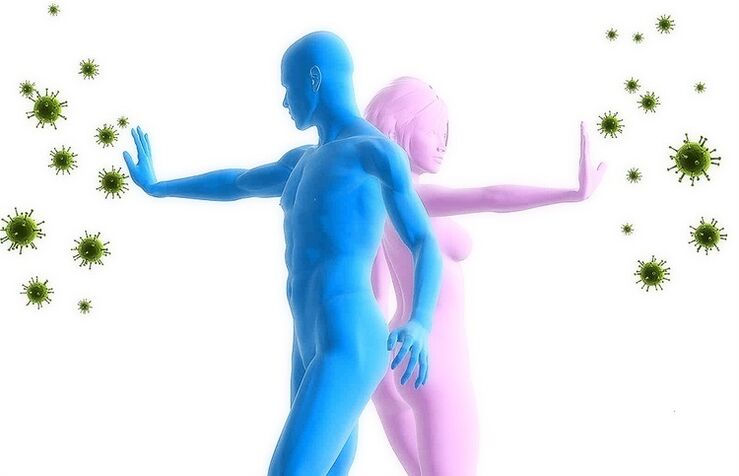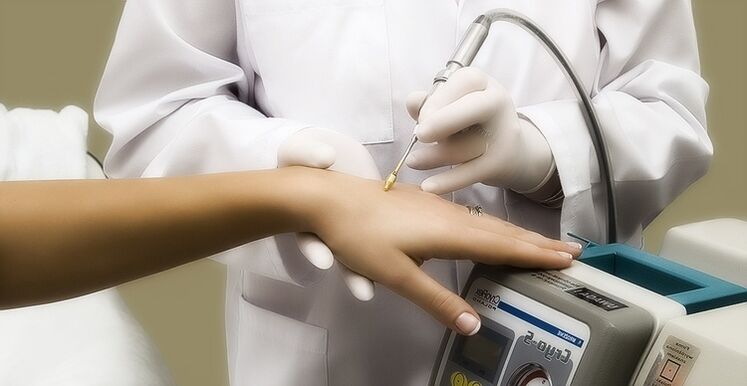Human papillomavirus is a cancer-causing disease. The main manifestations of HPV are the formation of warts, papillomas, and condyloma acuminatum on the skin and mucous membranes. Both women and men are affected by the virus.
Causes of HPV Appearance and Activation
notes! The main reason for the emergence of papillomavirus in the body is the infection of the infected person.
Factors that cause infection include:
- decrease in immunity;
- bad habits;
- frequent and severe neurological shock;
- Viral infection;
- Gastrointestinal pathology;
- Frequent partner changes, unprotected intercourse.
Is there a cure for human papillomavirus?
HPV in an actively developing stage is treatable.
The main purpose of treatment is to eliminate symptoms and strengthen the body's protective mechanisms.
Different treatments are available depending on the type of virus, symptoms and complications.
Can HPV be permanently cured?
A feature of HPV is that when it enters the body, it stays in the body forever. During periods when the body has strong defense mechanisms and is not exposed to the aforementioned risk factors, the virus is in a quiescent state and is not activated.
As the immune system declines, hygiene rules are not followed, and health deteriorates, papillomavirus can reactivate.

How to get infected with papillomavirus
HPV infection occurs through direct contact with an infected person, through mucous membranes and skin. There are several routes of infection:
- The main way is sexual contact. During unprotected sex, an infected partner has a 60-70% chance of transmitting papillomavirus. The risk increases significantly with frequent partner changes. Infections can occur even during kissing or oral sex in the presence of minimally invasive mucous membranes;
- HPV infection also occurs in households: when using the same towels, dishes, and hygiene products as the infected person. Risk of HPV infection in public saunas, baths and swimming pools;
- It is also possible for the virus to spread vertically - from mother to fetus during childbirth.
Why is human papillomavirus dangerous?
All variants of HPV can be conditionally divided into two categories: low oncogenic risk viruses and high oncogenic risk viruses. The second group is capable of developing neoplastic disease.
notes! HPV poses the greatest risk to women: highly carcinogenic strains of the virus are most susceptible to them.
In women, papillomavirus can cause a number of reproductive-related diseases:
- Cervical pathology: erosion, leukoplakia, adenocarcinoma, cancerous tumor;
- Oncology of the external genitalia, anal region.
In addition, the development of the disease is accompanied by the appearance of warts and papillomas on the genitals, extremities, armpits and neck. Tumors can cause discomfort and affect hygiene and habitual lifestyle, so they should be dealt with.
In men, HPV is associated with a lower risk of cancer, but it is not excluded. In addition, acute-angled papillomas may develop on the penis, which can cause discomfort and interfere with normal sexual activity. Such tumors should be removed immediately.
diagnosis method
Identification of the disease usually begins with a visual inspection by a doctor. During the examination, the mucous membranes, the epidermis of the skin are studied, and in particular it is necessary to carefully examine the areas where warts and papillomas are most frequently formed: the genital area, the armpits, the neck.
The main methods of diagnosing HPV include:
- Women will definitely need to undergo a colposcopy to examine the cervix and vagina, and pass cytology (scraped from the mucous membrane). Additional biopsy may be ordered if oncology is suspected;
- PCR analysis (polymerase chain reaction). allow you to identify viral DNA from any material you provide for analysis;
- The Digene test is a more accurate analysis. From the results, papillomavirus can be detected, its type can be identified by DNA, and the degree of malignancy can be determined.
General treatment options for HPV
At present, there is no unified treatment plan for human papillomavirus in the world. Two-component regimens performed best: they combined surgical removal of viral lesions with specific antiviral therapy at the same time. This method is up to 90% effective in treating HPV.
Characteristics of children's treatment
When HPV is activated in children, doctors start with conservative treatment: using immunomodulators and vitamins, and treating the rash with ointments and topically.
Surgical intervention is usually only employed if wart and papilloma growths are noted during the observation period.
Features of Pregnancy Treatment
notes! HPV during reproductive years has no apparent negative effects on its development and overall pregnancy.
Key recommendations for papillomavirus treatment in pregnancy:
- If the virus is detected before pregnancy, it should be treated immediately. This will normalize immunity and avoid thrush and other infections;
- Pregnancy is best planned at the end of the second cycle after treatment is completed;
- The HPV treatment process during pregnancy should start no earlier than 28 weeks of pregnancy - this is the time when all of the child's organs are formed. This will help avoid the negative effects of the drug on your child's body.
papillomavirus treatment
The main treatments for HPV are:
- taking certain antiviral drugs;
- Immunomodulator courses;
- Surgery to remove tumors (papillomas, warts);
- Relieve symptoms of disease through traditional medicine.

antiviral therapy
important! The choice of drug depends on the type of virus and the characteristics of the body. Only a doctor can prescribe the course of treatment and dosage, and self-medication can make the condition worse.
immunomodulatory drugs
The appointment of immunomodulators should be made by the physician based on the patient's immune profile - this will achieve faster and more stable results.
surgical approach (removal of growth)
The main goal of HPV surgery is to remove cells from the body that have been modified by the virus.
Depending on the characteristics of the disease and your doctor's instructions, it can be removed in a number of ways:
- Electrocoagulation. The effectiveness of the treatment ranged from 80% to 95% according to the HPV group;
- Remove the rash with a laser. High efficiency, but high probability of recurrence. In addition, wound healing after surgery is very long - up to 4 weeks;
- Radio wave surgery. For removing a single formation;
- cryotherapy. Effective rate - up to 65%, 40-50% of cases will relapse;
- chemical destroyer. For rashes on the genital area only. Efficiency is relatively low - no more than 40%.
folk remedies
notes! Alternative medicine approaches should not be considered a complete approach to the treatment of HPV. However, they are an affordable and harmless way to blunt the active performance of the virus.
The most effective against papillomavirus are folk remedies like this: fresh potato juice, steeply brewed twine, a mixture of garlic and vinegar, kalanchoe leaves, tea tree oil.
They should be used in the form of dressings for external manifestations of HPV - papillomas, warts.
Prevent HPV recurrence
The main goals of preventing recurrence of warts and papilloma are to boost immunity and maintain hygiene in the home and public places. recommended:
- adhere to a correct diet;
- receive vitamin therapy;
- Maintain a normal working style, ensure adequate sleep, and fully relax;
- Increase physical activity.
important! Vaccination is an effective way to prevent HPV reactivation - it can be used to protect the most dangerous virus groups in the long term.























